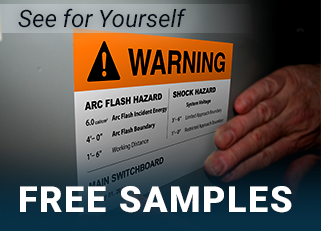Worker Details Chemical Inhalation Incident
03
February,
2023
2 MINUTE READ

A year and a half after a Florida store's remodel, Ed Highmen fears some damage may not be repairable. Unknown chemicals in use during construction in 2017, he said, are to blame for constant headaches and other symptoms that have sent him repeatedly to doctors and the emergency room. When work sites change, it's necessary to train and provide workers with hazard communication. During building construction, workers must have full understanding of the tasks at hand for optimum safety.
Lack of Information
"I got very sick from inhalation, ingestion of chemicals during the remodel," said Highmen, 33. He says he was given no information about the potential for ingestion and there were no protective measures in place during the remodel. While working, Highmen said his health gradually became worse. He said he was bullied and mistreated after voicing concerns about workplace safety and revealing concerns for his health.
Lead, asbestos, mold, and other renovation hazards can lie dormant in building materials until disturbed. These elements are also known to have dangerous effects on nearly every system in the human body. In 2018, the Occupational Safety and Health Administration (OSHA) reported that HazCom violations grew by 9 percent. Also, a lack of respiratory protection (3,118 violations) and a lack of eye and face protection (1,536 violations) rank at No. 4 and No. 10 respectively among the 2018 Top 10 OSHA violations.
Protect Worker Health
Employers can build a better workplace while protecting worker health. Prior to any construction work, safety managers should go over renovation activities, site access requirements, and health and safety precautions with workers. For safer remodeling, workplaces can follow these simple steps:
- HazCom training: Provide information about hazardous chemicals in the workplace. Make available an explanation of chemicals and their potential danger in Safety Data Sheets. Go over where to find the SDS, safe chemical handling and storing, and emergency procedures with workers.
- Use safer materials: Avoid products made with harmful finishes, adhesives, and other potentially dangerous materials. Look for products that meet emission standard limits to prevent occupational exposure.
- Take precaution: Construction on existing buildings can send harmful particles in the air. Be sure to provide proper ventilation during dust-generating work. Store and require use of respirators, gloves, coveralls, shoe covers, safety glasses, and other PPE.
- Notify and remind workers: Post construction signs and mark accessible areas. Reinforce borders of working areas using repositionable floor marking. Highlight wash stations and emergency kits, new exits, and reinforce security measures. Post signs to inform workers not to eat, drink, or smoke in or near work areas and reminders to wear PPE. Look for defects and miscommunication in construction labels and signs.
- Clean up: A clean work site ensures safety. Protect workers and the environment by using proper hazardous waste disposal procedures.
Working safely during construction requires knowing what chemicals and other hazards workers could face. Chemical inhalation and ingestion can seriously harm workers. Safety managers can take care to protect air quality and worker health during construction to reduce the exposure risk to workers and building occupants.
RELATED RESOURCES

Importance of a Chemical Risk Assessment
Chemicals are in use in workplaces every day. It is important to follow and maintain chemical safety for ...
Read
Mislabeled Bottle Causes Injury
An injury incident at a university lab prompts staff to better organize the lab, revisit chemical safety ...
Read
Tips for Better Chemical Safety Management
Workplace chemical safety is all about understanding the risks and following proper protocol. Train and ...
Read.png)


